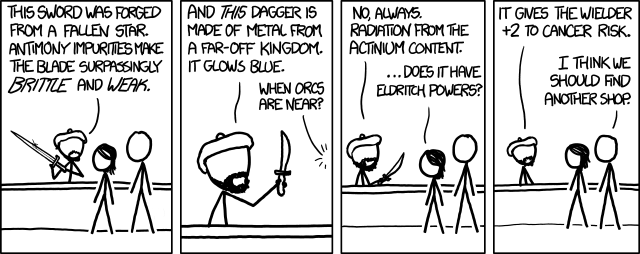wordwalker
 Auror
Auror
Here's something we haven't talked about: scabbards.
One idea I've come across now and then is that your scabbard can actually trip you up in a fight, and you want to unhook and discard it if you have a chance. Is that just true for the longer swords (katana, bastard, and longer) or is it sometimes a good idea for arming swords too? Does a fighting style like profiled fencing, that controls your footsteps, help?
Edit: And, how feasible is the Xena-style back scabbard? I actually built one in my LARP days and know they slow down an arming sword's draw but make a longer sword basically impossible to get out without shifting off the back. (Though if you're in court or such, they might be the only way to wear a longer sword without it catching on everything. Peter Morwood's quasi-samurai have a back-scabbard that shifts neatly to the hip when they're expecting to fight.)
I do know swords take some attention just to walk around with them sticking out behind you, mostly when you sit down: you either want a couple feet of space behind the left edge of the chair, or you do unhook the thing.
One idea I've come across now and then is that your scabbard can actually trip you up in a fight, and you want to unhook and discard it if you have a chance. Is that just true for the longer swords (katana, bastard, and longer) or is it sometimes a good idea for arming swords too? Does a fighting style like profiled fencing, that controls your footsteps, help?
Edit: And, how feasible is the Xena-style back scabbard? I actually built one in my LARP days and know they slow down an arming sword's draw but make a longer sword basically impossible to get out without shifting off the back. (Though if you're in court or such, they might be the only way to wear a longer sword without it catching on everything. Peter Morwood's quasi-samurai have a back-scabbard that shifts neatly to the hip when they're expecting to fight.)
I do know swords take some attention just to walk around with them sticking out behind you, mostly when you sit down: you either want a couple feet of space behind the left edge of the chair, or you do unhook the thing.
Last edited:

 Myth Weaver
Myth Weaver
 Maester
Maester

 Scribe
Scribe Minstrel
Minstrel